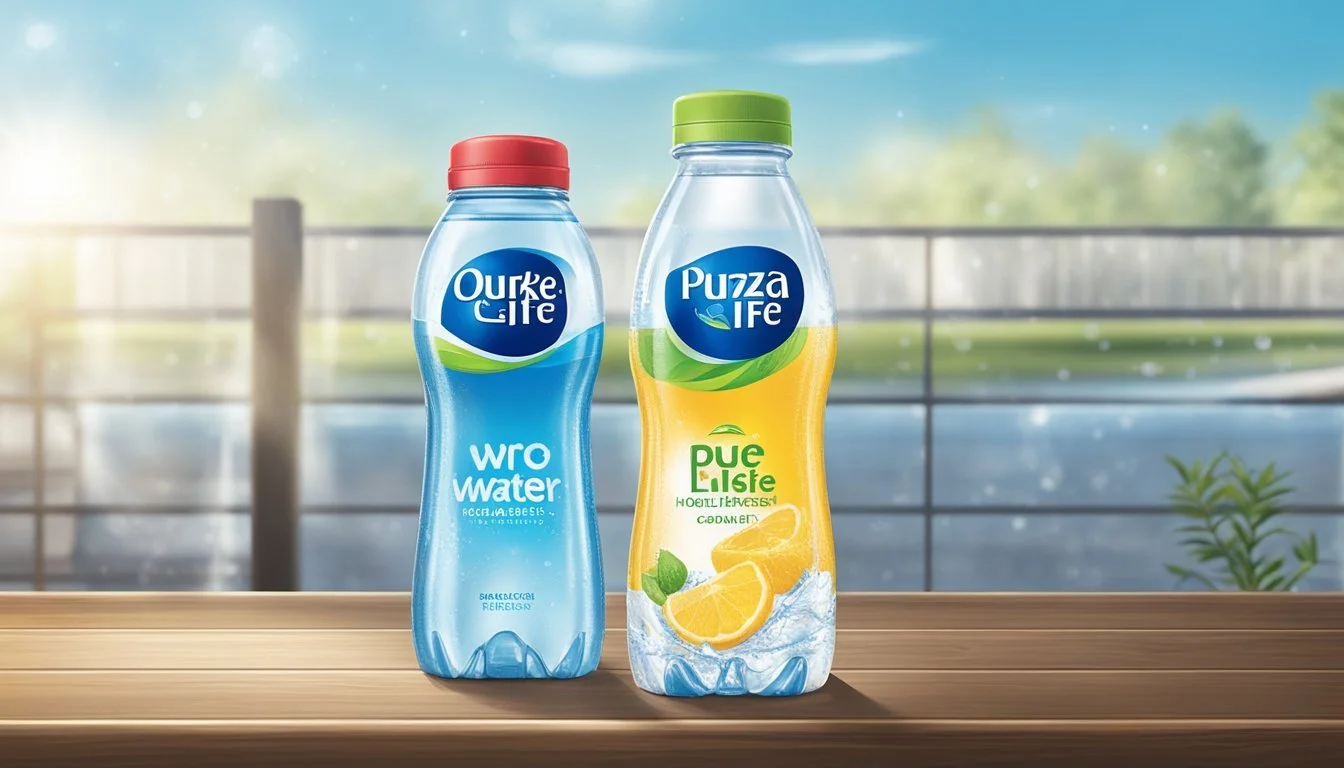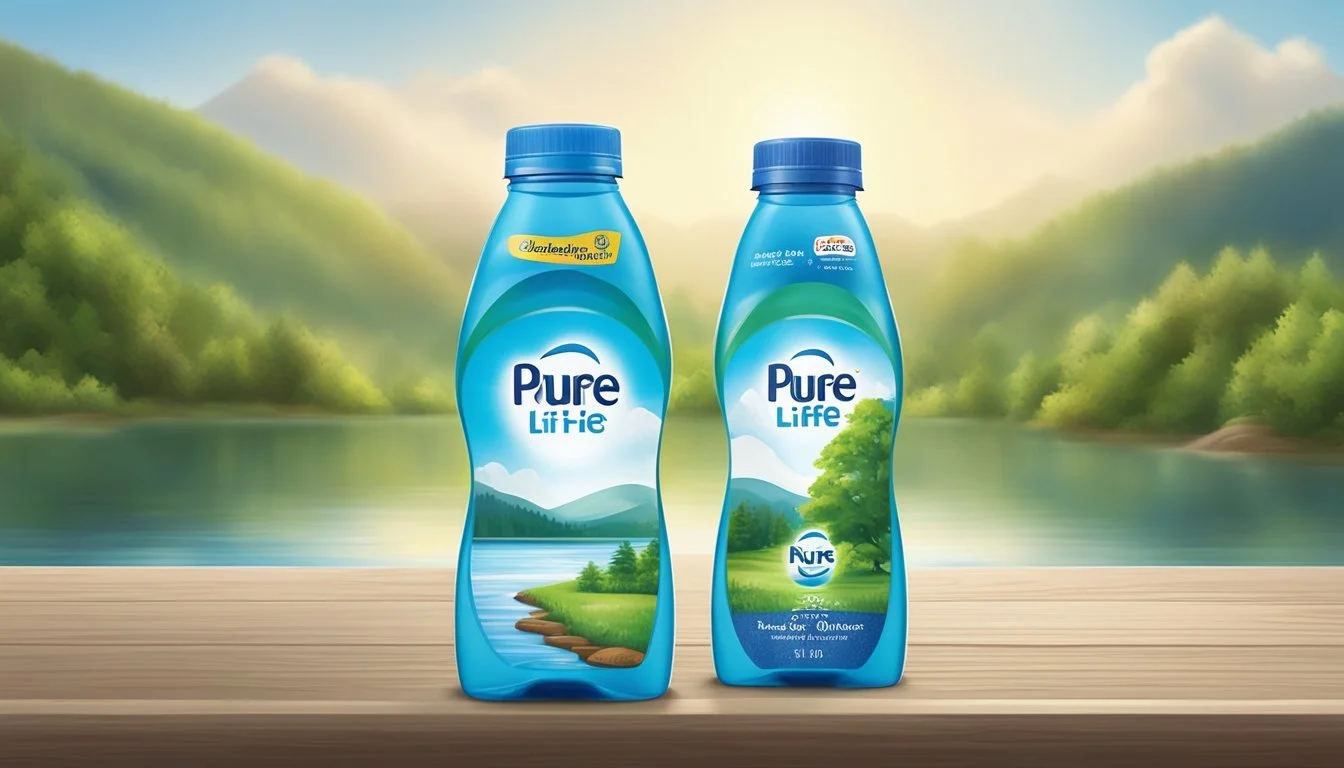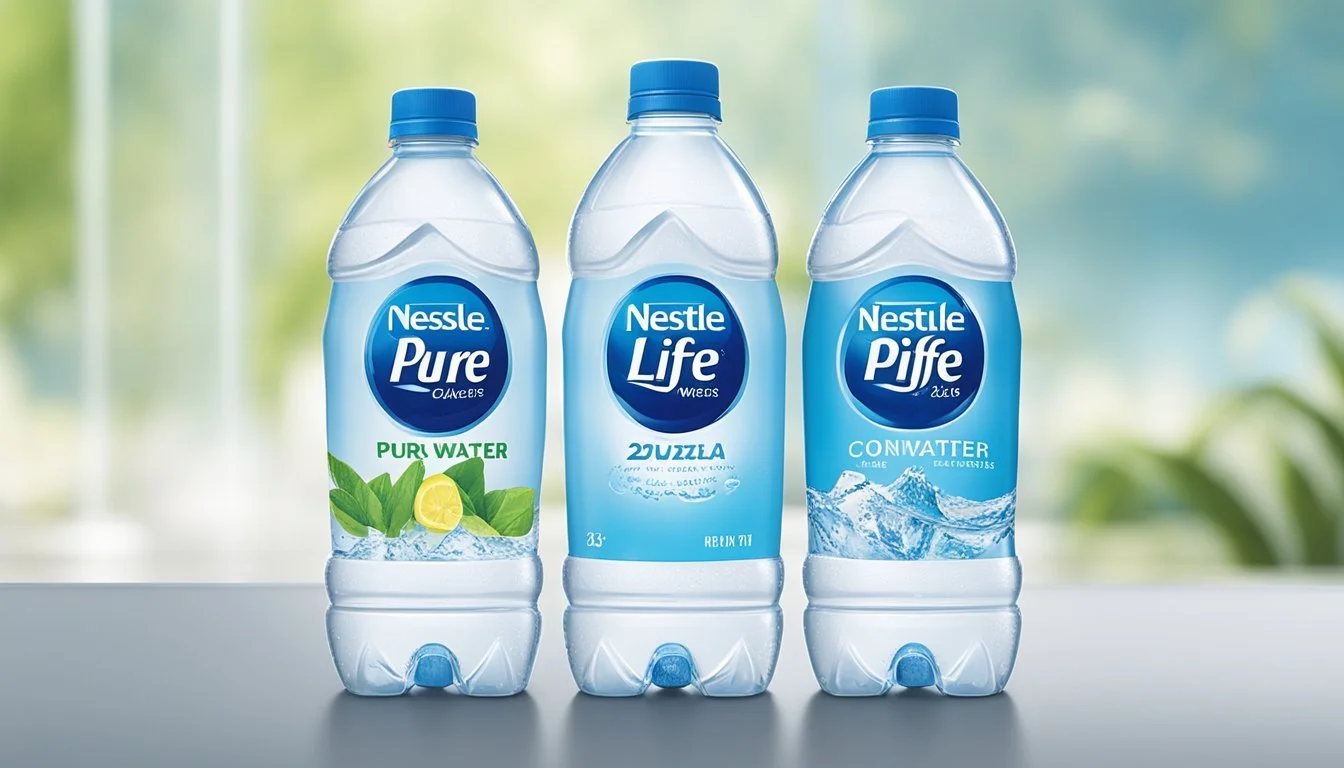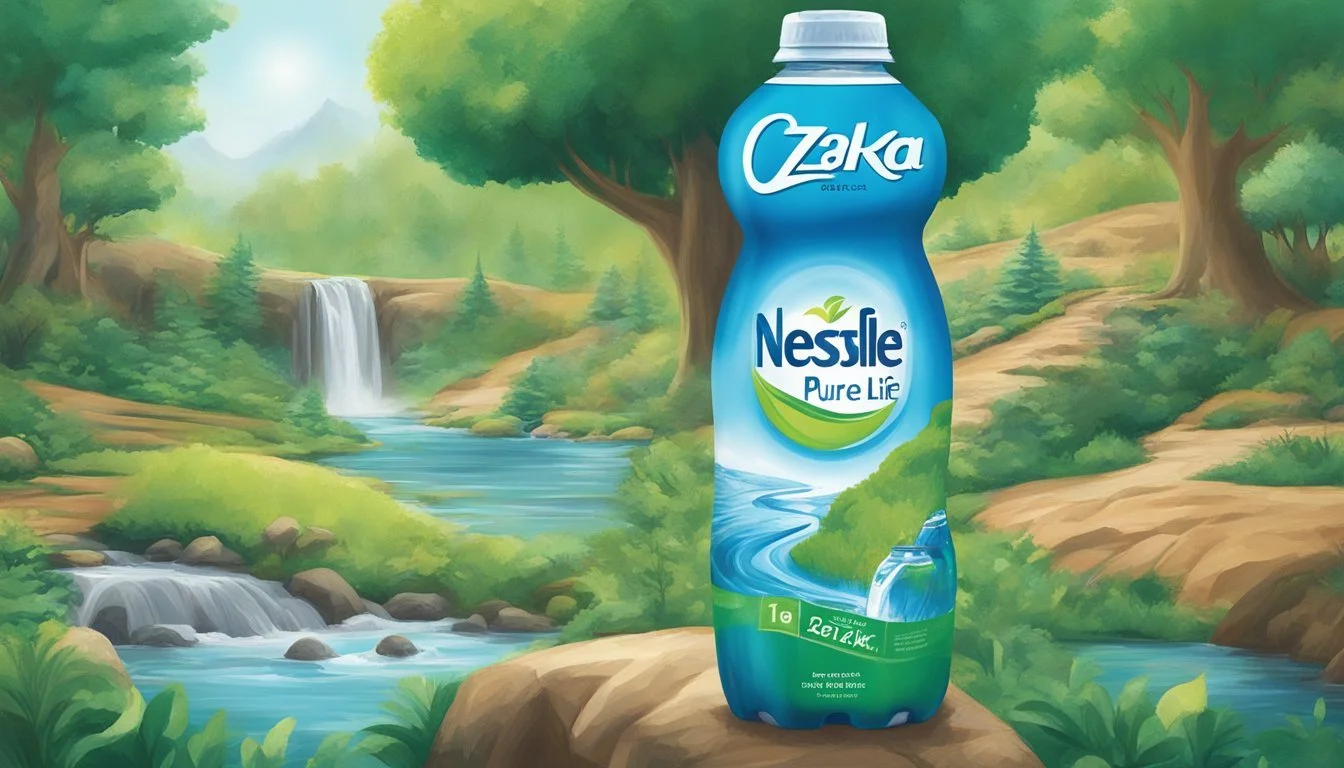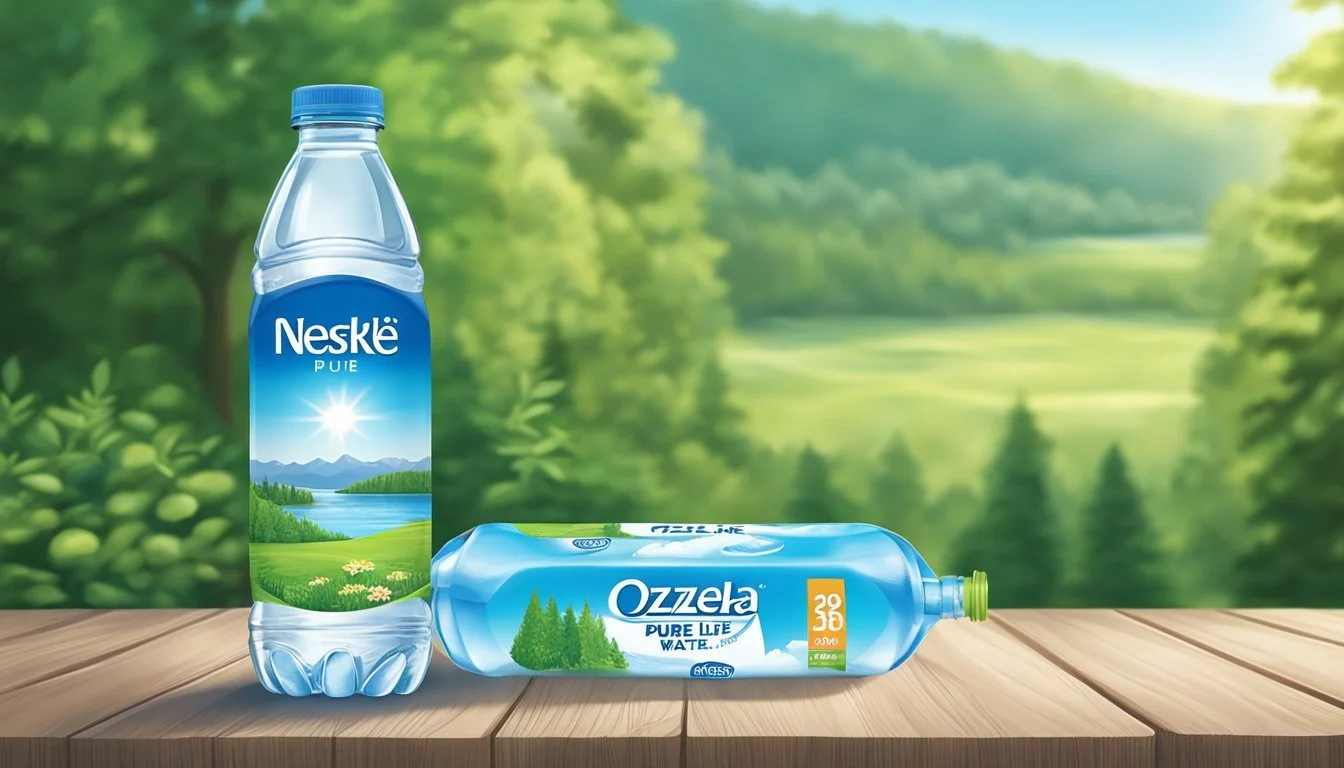Nestlé Pure Life vs. Ozarka
Unbiased Comparison of Bottled Water Brands
Bottled water has become a mainstay in the global beverage market, with countless brands offering products that claim to offer the purest and freshest water available. Among the myriad options, Nestlé Pure Life and Ozarka stand out as prominent choices for consumers. Nestlé Pure Life, a product of the world's largest bottled water company, is known for its purified water, which undergoes a rigorous filtration process. Ozarka, on the other hand, sources its natural spring water from Texas, boasting a unique mineral composition that reflects the geography of its origin.
As consumers navigate the bottled water aisle, the decision between Nestlé Pure Life and Ozarka often comes down to more than just taste; it involves considerations of sourcing, processing methods, and the environmental footprint of the brand. Nestlé Pure Life's purification process involves demineralization and added minerals for taste, offering a consistent profile across various regions. Conversely, Ozarka's appeal lies in its regional sourcing and natural mineral content, providing a taste of Texas' springs with every sip.
The debate between the two brands is not just about personal preference but also encompasses broader discussions about sustainability, health, and the ethics of commodifying a natural resource. Whether consumers are concerned with the environmental impact of their purchase or simply seeking the best-tasting hydration, Nestlé Pure Life and Ozarka represent two distinct paths within the bottled water industry. Each brand's commitment to quality and safety ensures that the choice between them often rests on individual values and the priority given to the nuances of taste and purity.
Overview of Bottled Water Industry
Bottled water has become a staple commodity in the global beverage market. The industry is marked by a range of brands catering to various consumer needs and preferences, with trends that highlight an evolving landscape influenced by health and sustainability considerations.
Major Bottled Water Brands
Major players dominate the bottled water industry, contributing to a significant portion of its global revenue. Nestlé, with brands like Nestlé Pure Life, is one of the largest and most recognized names in the market. Other key brands include Ozarka, owned by Nestlé until its North American water business was sold, and international contenders like Fiji and Voss. These brands have established a presence across retail settings, offering products that often serve distinct market segments.
Nestlé Pure Life: Positioned as an affordable and accessible option with a global footprint.
Ozarka: Known for sourcing water from Texas springs, catering to regional preferences.
Trends and Consumer Preferences
The preferences of consumers have steered the bottled water industry through various trends. The International Bottled Water Association (IBWA) frequently reports on the increasing consumer demand for healthier hydration options—a trend that has contributed to the rise in popularity of bottled water. Purity, taste, and convenience are factors often considered by consumers making purchasing decisions.
Trends have also shifted towards eco-consciousness, with brands adapting to demands for:
Recycled packaging materials.
Reductions in plastic usage.
Improved water sourcing sustainability practices.
The variety and adaptability of these companies demonstrate an industry that is constantly evolving to meet consumer needs while balancing environmental concerns.
Understanding Water Quality
When comparing bottled waters like Nestlé Pure Life and Ozarka, one must assess the quality through pH levels, mineral content, and the presence of contaminants or heavy metals.
Importance of pH Levels and Mineral Content
The pH level of water indicates its acidity or alkalinity, which can affect both taste and health. A balanced pH, typically close to 7, is considered optimal for drinking water. Minerals such as calcium, magnesium, and potassium are beneficial for health, yet their content varies in different bottled water brands.
Nestlé Pure Life: Typically has a neutral pH close to 7 and is enhanced with a blend of minerals for taste.
Ozarka: Sourced from Texas springs, tends to have a naturally occurring balance of minerals, contributing to its taste and pH stability.
Safety Concerns: Contaminants and Heavy Metals
Consumers often assume bottled water is free of contaminants. However, testing for safety ensures the absence of harmful levels of substances like lead and other heavy metals that could pose health risks.
Contaminants: Can include a range of chemicals and microbiological entities that must be monitored.
Heavy Metals: The presence of lead, arsenic, and cadmium in water should be negligible or below established safety limits.
Bottled Water Brand Lead (Pb) Arsenic (As) Cadmium (Cd) Nestlé Pure Life Absent Below limit Below limit Ozarka Absent Below limit Below limit
Both Nestlé Pure Life and Ozarka comply with strict safety standards to ensure their bottled water is free from contaminants and heavy metals that could compromise water quality.
Comparison of Nestlé Pure Life and Ozarka
Choosing between Nestlé Pure Life and Ozarka often boils down to their sources, purification methods, and the end product's taste along with associated health benefits. Both brands stand out in the bottled water market, and consumers have different preferences based on these factors.
Source and Type of Water
Nestlé Pure Life: It's classified as purified water, meaning it comes from municipal sources or, in other words, tap water. It undergoes an extensive purification process to ensure quality.
Ozarka: Sourced from Texas springs, Ozarka is categorized as spring water. It's naturally occurring water that flows to the earth's surface from an underground aquifer.
Filtration and Purification Processes
Nestlé Pure Life:
Multi-step filtration process, which often includes reverse osmosis.
Enhanced with a light blend of minerals for a distinctive taste.
Ozarka:
Natural filtration through layers of rock and sand.
Ozarka implies minimal processing to retain the natural minerals enhancing its taste.
Taste and Health Benefits
Nestlé Pure Life:
The taste is consistent and neutral due to the controlled purification process.
Health benefits are maintained by mineral additives post-filtration for balanced mineral content.
Ozarka:
The taste can vary slightly depending on the source spring but is often fresh and crisp.
The natural minerals found in spring water are touted for their health benefits, though the specifics depend on the particular spring.
Environmental Impact and Sustainability
Nestlé Pure Life and Ozarka both produce bottled water, which raises concerns about environmental impact, particularly in terms of plastic waste and sustainability efforts.
Plastic Bottle Usage and Recycling
Both Nestlé Pure Life and Ozarka utilize plastic bottles for packaging their water, which contributes to environmental waste if not properly managed. However, both companies have shown efforts to increase the use of recycled plastic in their bottles. Nestlé Pure Life, for example, incorporates PET plastic which can be recycled and reused, aiming to improve the sustainability of their products.
Nestlé Pure Life: Utilizes PET bottles, which are recyclable.
Ozarka: Also uses plastic bottles, with some commitment to using recycled materials.
Eco-Friendly Alternatives
In the quest for sustainability, both brands explore eco-friendly alternatives to reduce the environmental impact. This includes measures to incentivize recycling and reduce the use of virgin plastics.
Nestlé Pure Life: Has made commitments to sustainability through increased use of recycled materials in their bottles.
Ozarka: Owned by Nestlé, operates under similar sustainability initiatives but may have different execution strategies at a regional level.
Consumer Insights
The aspects that typically influence consumers' choices between Nestlé Pure Life and Ozarka are primarily price and accessibility. These factors contribute significantly to the consumer decision-making process.
Price Comparison
Consumers often consider the price as a decisive factor when choosing bottled water. Nestlé Pure Life is widely recognized for its affordability. The brand positions itself as providing quality hydration at a reasonable cost. On the other hand, Ozarka, which sources its water locally from Texas, can have varying prices depending on the region. Here's a brief comparison:
Nestlé Pure Life: Often sold in larger quantities, which may reduce the cost per bottle.
Ozarka: Slightly premium pricing due to its local sourcing and branding.
Accessibility and Availability
When it comes to accessibility and availability, Nestlé Pure Life boasts a substantial global distribution network, making it readily available in numerous countries and stores. This extensive availability can influence consumers to opt for Pure Life when convenience is a priority.
Ozarka, while popular in the United States, especially in the South, may not have the same level of widespread availability as Nestlé Pure Life. Consumers seeking local brands might prefer Ozarka, but those who prioritize ease of purchase might lean towards the more widely distributed Nestlé Pure Life.
Health Considerations
When comparing Nestlé Pure Life and Ozarka bottled water, consumers often evaluate the health benefits and potential risks associated with each brand. This section explores the presence of beneficial minerals like electrolytes, as well as potential chemical risks, to provide a clear understanding of health considerations.
Electrolytes and Mineral Benefits
Electrolytes such as magnesium and calcium are important for hydration and overall bodily functions. They play a role in nerve signaling, muscle function, and maintaining proper hydration levels.
Nestlé Pure Life: Known to add minerals back into their water for taste.
Magnesium: Helps convert food into energy.
Calcium: Vital for bone health.
Ozarka: Sources its water from natural springs, which may contain naturally occurring electrolytes and minerals. Specific levels can vary.
Risks of BPA and Other Chemicals
Bisphenol A (BPA) is a chemical that is often found in packaging materials and can seep into water, posing a health risk.
Nestlé Pure Life: Their bottles are made of PET plastic which is BPA-free, minimizing potential health risks.
Ozarka: Offers both BPA-free bottles and occasionally glass options, reducing exposure to potentially harmful chemicals.
Regulatory Standards and Safety Certifications
When evaluating Nestlé Pure Life and Ozarka bottled water, it is essential to consider regulatory standards adhered to by these brands. Both companies comply with FDA regulations for the water bottling process, ensuring that the water meets safety and quality standards. The FDA's standards encompass various contaminants such as arsenic and PFAS chemicals, both of which have been scrutinized due to their potential health risks.
Nestlé Pure Life and Ozarka water undergo rigorous testing for these substances. They typically provide water quality reports, which highlight testing results and certify that the levels of contaminants are within the limits set by regulatory bodies. Here's a brief comparison:
Criteria Nestlé Pure Life Ozarka Arsenic Level Compliance Yes Yes PFAS Level Screening Conducted Conducted FDA Regulation Adherence Yes Yes Safety Certifications NSF International, IBWA NSF International, IBWA
Both brands have received certifications from NSF International and are members of the International Bottled Water Association (IBWA), which have their own set of standards and practices to ensure the safety and quality of bottled water.
Safety certifications demonstrate that they have met or exceeded the required safety levels for potential contaminants and are continuously monitored for compliance. It's the responsibility of consumers to stay informed and ensure they are consuming products that meet safety standards. The brands' commitment to these regulations and their transparent reporting can provide a level of confidence regarding the purity and safety of the bottled water.
Final Verdict
When choosing between Nestlé Pure Life and Ozarka, consumers consider several factors, including taste, purity, source, environmental impact, and price. Nestlé Pure Life, being a product of the world's largest bottled water company, offers widespread availability. However, it has been rated as average by some sources, due to its process of being purified water with added minerals for taste.
Ozarka, on the other hand, is a natural spring water, sourced from springs in Texas. It presents itself as a regional favorite, boasting a taste preferred by some due to its natural origin. The brand faced legal issues regarding distribution rights in the past, but these do not directly influence the water's quality.
Price Comparison:
Nestlé Pure Life: Generally affordable.
Ozarka: Price may vary due to regional sourcing.
Environmental Considerations:
Nestlé Pure Life: Bottles are recyclable.
Ozarka: Offers recycling options. Spring water extraction has environmental considerations.
Taste:
Nestlé Pure Life: Added minerals influence taste.
Ozarka: Natural spring water taste.
Purity:
Nestlé Pure Life: Purified with added minerals.
Ozarka: Sourced from natural springs.
Tips for Consumers:
One should check for recycling programs available in their area.
One may consider the source of water as a factor in their decision.
It's advisable to compare prices at local retailers.
In summary, the choice between Nestlé Pure Life and Ozarka comes down to personal preference, availability, and willingness to support different water sources and processes. Neither brand clearly outperforms the other across all metrics; thus, consumers are recommended to try both and make an informed decision based on their priorities.


